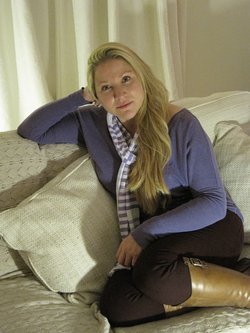 To plot or not to plot,
To plot or not to plot,
that is the
question
I read an article recently in which Stephen
King said plotting was for dullards. I’ll admit I wanted to cry a little
because he’s one of my idols but I can’t help it - I’m a plotter. Without a
plot I’m not sure I’d be able to write anything. Would I love to be able to
write organically where my characters weaved their own storylines almost
independently of me? I don’t think I would. I am a self-confessed control freak
and in my world, my characters do as their told.
However, when I first started writing I had
no idea how to plot or where to begin.
It was after reading Mo Hayder’s latest
offering that I decided to have a go at writing myself. I began by embellishing
scary incidents that had happened to me or people I knew and before long I had
a dozen chapters of action-packed, fear-inducing…exposition. I decided I needed
help and so applied for the MA in Creative Writing at Bath Spa. The application
required a sample of writing plus a synopsis of the novel I was hoping to
develop on the course. A quick google search for, ‘how to write a synopsis’ and
I was away.
It wasn’t until I arrived on my first day
that I realised quite how far out of my depth I was. I had the bare bones of an
idea with a few characters that were yet to take shape. We were expected to
share our work and give and receive feedback - also known as, criticism. It was
a baptism of fire as my characters and story ideas were torn apart and their
weaknesses exposed. However, it did force/encourage me to do better.
I spent hours thinking about my characters
and their motivations. I realised I had the method of murder, who had done it
and how the lead detective was going to solve the case but I was lacking the
why. And so I came back to the synopsis. I worked on each paragraph fleshing it
out and then editing it back to the bare minimum until I had a detailed,
plausible story with all the twists and turns required to make it an exciting
read – hopefully. With the story sorted I now needed a structure to follow as
turning a five page synopsis into a novel was easier said than done.
During the MA we were shown a whole raft of
past students essays in which they detailed how they plotted. It was here that
I discovered the excel spreadsheet. As soon as I saw the method being used by a
particular student I knew I would be stealing it for my own. Below is an
example of how it looks.
|
Chapter
|
Date
|
Character 1
|
Detail
|
Character
|
Theme
|
Background
|
Word Count
|
EDITED
|
|
1
|
17th April - Thursday
|
Maggie Hungerford
|
Maggie - wakes up in a tomb
|
man mentioned in dream sequence
|
fear/terror
|
Maggie had dinner with man previous evening - who?
|
746
|
Y
|
|
1a
|
22nd April - Tuesday
|
Jane
|
Jane called by Sue, Mark Leech's wife. He's disappeared but there's
blood on-scene
|
PC Chris, DS Penny - missing persons members - forensics
|
|
|
1,524
|
Y
|
|
2
|
22nd April - Tuesday
|
Jane
|
Jane at Sue's house as the investigation into Mark's disappearance
gets underway
|
SOCO, Sue, MISSPER
|
Uncertainty, fear, dread
|
Mark's missing. There's evidence of blood in the utility room. No
family rows or explanations why
|
2,255
|
Y
|
Using the synopsis I broke down the story
into chapters, detailing each one with the chapter number, the day/date, the
narrating character, a brief description of what happens, secondary characters,
the theme of that chapter, some background, the word count and finally, whether
it had been edited it or not. Obviously I didn’t do the entire novel all in one
go – that would have been amazing. I worked five or so chapters ahead which
meant that when I sat down to write I wasn’t faced with a blank page. I knew
what chapter I would be writing and what had to happen. It might sound very
clinical and uninspiring but having the skeleton in place with my synopsis and
the breakdown with the excel spreadsheet, I found that I could enjoy the
creative process without worrying about where I was going, or what had to
happen in order to keep the story on track. I suppose, it is similar to when I
read. I don’t want to see how the writer has put the plot together. I just want
to immerse myself and enjoy the story without getting too obsessed with who did
it or how the novel is going to end. Of course I want to guess who the bag guy
or girl is but I don’t want that desire to distract from the journey and the
characters.
Apart from some minor tweaks I still use
the same method today.
I feel very fortunate to be a writer but
even more so, I am grateful that along the way I have discovered a method of
plotting and planning that works for me. Every writer is different so despite
being a ‘dullard’, I’m happy.
 Trust No One by Clare
Donoghue
Trust No One by Clare
Donoghue
published by Pan on 10th March
A paperback original
and eBook, priced £7.99
coupons for drugs
fyter.cn viagra coupon 2016
free cialis coupons
read free coupon for cialis
bystolic coupon mckesson
forest laboratories patient assistance
viagra kaufen
read viagra bei frauen
amoxicillin nedir
mipnet.dk amoxicillin al 1000
depade naltrexone
link revia and alcohol